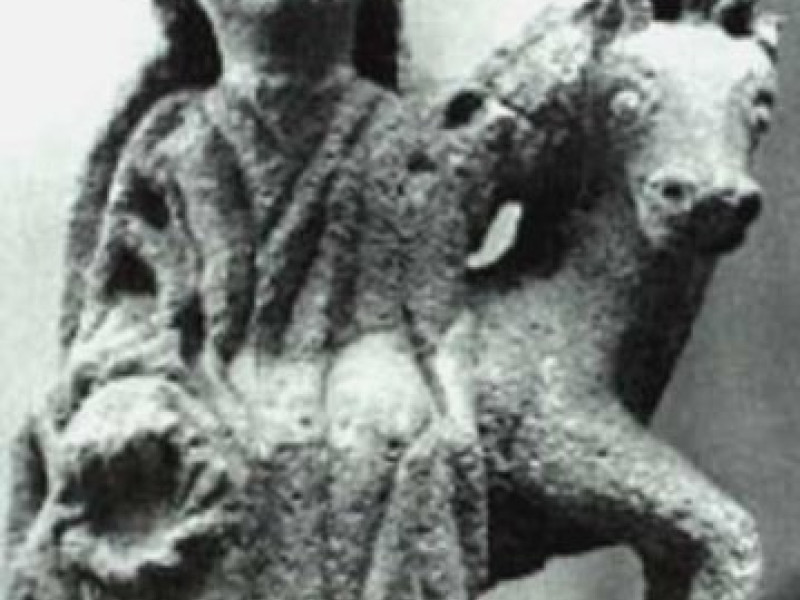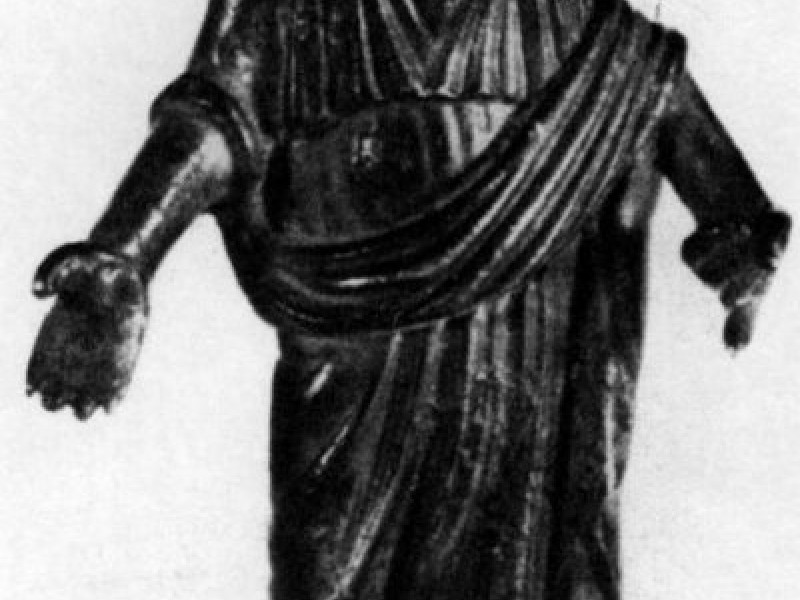genius cucullatus
Genius Cucullatus, which means the "Hooded One," are somewhat mysterious figures. The hooded cloak is called cucullus.
Stone and clay statuettes and stone-carvings of Genius Cucullatus have been found in both Continental Europe and Britain.

Genii Cucullati (Hooded Ones)
Stone relief, AD 225
found at Housesteads (Bercovicium), Northumberland, England
Housesteads Museum
The length of the hooded cloak varies from the head to waist or covered from head all the way to his/her ankles, where only their face, ankles and feet are exposed. More often than not, the figures have footwear on their feet. Only a few images have the hoods pushed back to their shoulders.
Who are these hooded figures? There seems to be many speculations and theories on Genius Cucullatus, and their attributes remain a mystery to this day.
Even the gender of the figures are difficult to determine. Some seem to be clearly male, while others appear to be female, but usually their sex is ambiguous. However, there are a number of clay figures found in the Moselle regions where they wear moustaches to indicate they are males, obvious signs as to their gender.
What other gods they appear with and what they hold in their hands might give us more information about their attributes. They sometimes appear either singular or as a triplet, with the mother goddess (eg. Rosmerta), suggesting that they are connected with healing and fertility; and if they are holding a fruit or a money bag, then it would symbolise fertility and prosperity. Statuettes found near springs would indicate that they were deities of healing, since water was a symbol of health and healing, such as the thermal bath at Aque Sulis (Bath). Swords might indicate that they were guardians, or in the case where they appear next to Lenus, god of healing, would indicate they were for protection against disease.
The Genius Cucullatus has been confused with another hooded figure, Telesphorus, who appeared in Greek/Roman myths as the son of Asclepius. However, Telesphorus usually appeared bare-footed, holding a scroll in one hand. But since the Romans conquered and settled in the provinces, it is sometimes difficult to determine whether the figures are Telesphorus or Genius Cucullatus. If there are three hooded figures together, then we can safely say they are Celtic. The difficulty is to determine what a singular figure represents.
More frequently, objects found in Britain are usually grouped together in threes (Genii Cucullati), found in the north near Hadrian's Wall and in the southwest in Gloustershire. Those found in Gaul and the Rhine regions tend to be singular figures. The Genii Cucullati found in Gaul often appear in dwarfish sizes.
By Jimmy Joe






